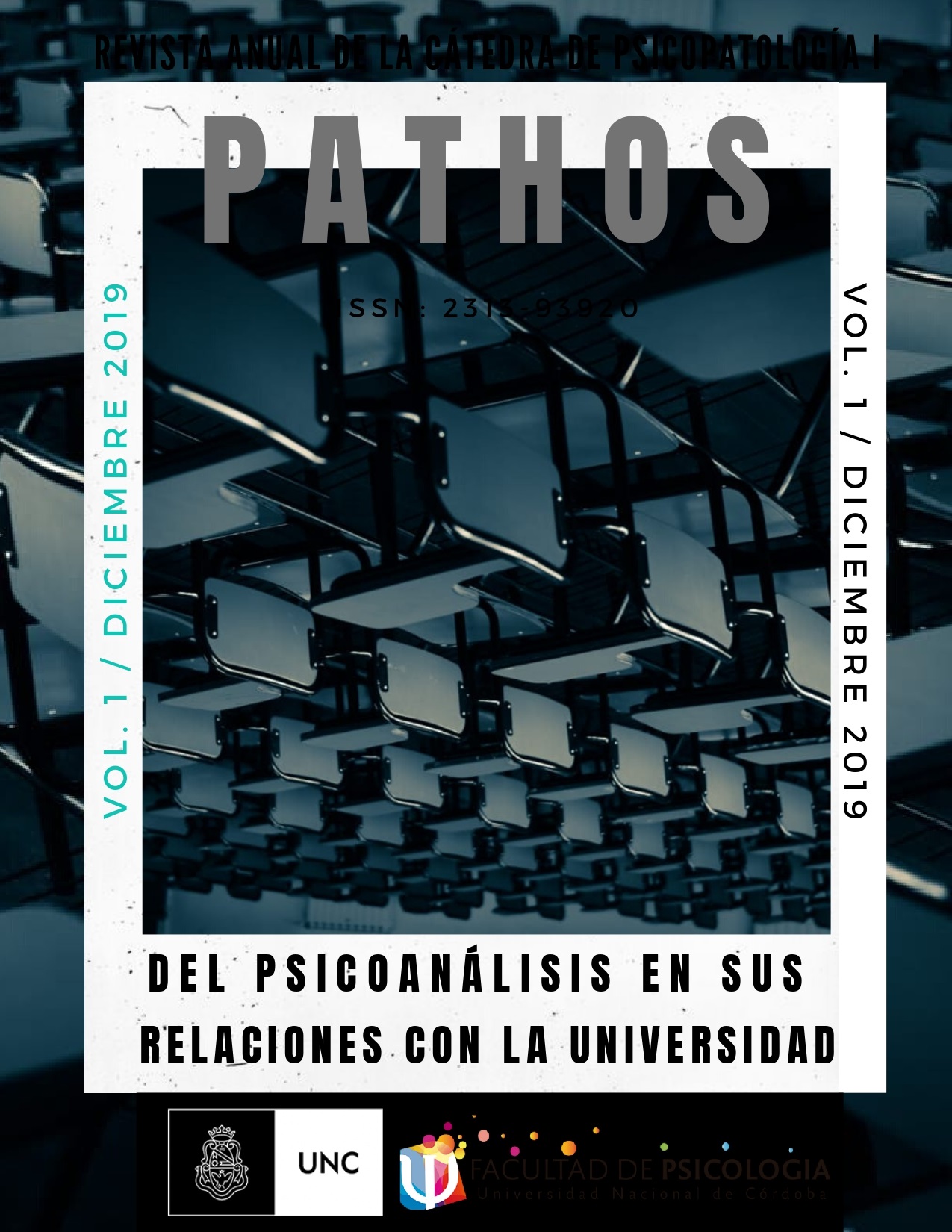The analyst-teacher: His cause in the university
Keywords:
psychoanalysis, university, transmission, professor, knowledge, desireAbstract
This article intends to make us think about the position of those who teach psychoanalysis at University today. For that purpose, we get closer to University speech, since it is closely connected to the master ́sspeech and how this results in the standard reproduction of theoretical blocks. This brief approach becomes the starting point to suggest an analyst-professor who stays away from mere reproduction to head into invention. We therefore wonder what the challenges this figure must meet are. We introduce right here a number of elements that allow these analyst-professors aim at a far beyond of what hasbeen established. Not only elements that have to do with education but also those which are connected to the ethics and politics they face. We also get close to being able to outline the aim of transmission and the role of desire within transmission.
Downloads
References
Álvarez, J. (1 de junio de 2012). Etimología de «docente», «maestro» y «profesor». Gramática histórica delcastellano. Recuperado de: https://www.delcastellano.com/etimologia-docente-maestro-profesor/
Córdoba, M. y Epsztein S. (2019) “La transmisión del psicoanálisis en la universidad”. Revista electrónica de lafacultad de psicología “Intersecciones Psi”, UBA, Buenos Aires. Recuperado de:http://intersecciones.psi.uba.ar/index.php?option=com_content&view=article&id=151:la-transmision-del-psicoanalisis-en-la-universidad&catid=9:perspectivas&Itemid=1
Freud, S. (1919) “¿Debe enseñarse el psicoanálisis en la universidad?”. En Obras Completas, Amorrortu, Vol.XVII, Buenos Aires, 1992.Fridman, P. (2010) Acerca de la causa. Virtualia. Recuperado de:http://www.revistavirtualia.com/articulos/363/estudios/acerca-de-la-causa
Goldman, R. (2011) Subversión del sujeto por el discurso psicoanalítico. Consecuencias. Recuperado de:http://www.revconsecuencias.com.ar/ediciones/007/template.php?file=arts/aplicaciones/Subversion-del-sujeto-por-el-discurso-analitico.html
Gómez, M. (2015) Psicoanálisis y Universidad. Entrevista en Revista: Conclusiones Analíticas; año 2, n° 2 -EDULP: Editorial de la Universidad de La Plata. Recuperado en:http://www.editorial.unlp.edu.ar/articulo/2015/9/28/revista_conclusiones_analiticas_02
Lacan, J. (1953) Función y campo de la palabra. En Escritos 1, Siglo veintiuno editores, Buenos Aires, 2009.
Lacan, J. (1969-1970). El reverso del psicoanálisis. Seminario 17. Ed. Paidós, Buenos Aires, 2017.
Lacan, J. (1972) Hablo a las paredes. Ed. Paidós, Buenos Aires, 2012.
Laurent, E. (1999-2000) “¿Cómo se enseña la clínica?”. Cuadernos del Instituto Clínico de Buenos Aires,Buenos Aires, 2007.
Laurent, E. (2000) “El analista ciudadano”. En Psicoanálisis y Salud Mental. Buenos Aires: Ed. Tres Haches.Pág.113-121.
Miller, J.A. (1986) Cinco variaciones sobre el tema de “la elaboración provocada”, en El cartel en el CampoFreudiano, Eolia, Buenos Aires, 1986.
Miller, J.A. (1991) “De la naturaleza de los semblantes. Los cursos psicoanalíticos de Jacques-Alain Miller”.Ed. Paidós, Buenos Aires, 2011.
Real Academia Española [RAE] (2016). Definición. Edición Tricentenario. Rae.es. Recuperado de:https://dle.rae.es/?w=diccionario
Downloads
Published
How to Cite
Issue
Section
License
Copyright (c) 2019 Matías Palacio, Clementina Parra Pautasso, Rocío Jazmín Rivero

This work is licensed under a Creative Commons Attribution-NonCommercial-ShareAlike 4.0 International License.
Attribution - Non-Commercial - Share Alike (by-nc-sa): No commercial use of the original work or any derivative works is permitted, distribution of which must be under a license equal to that governing the original work.







